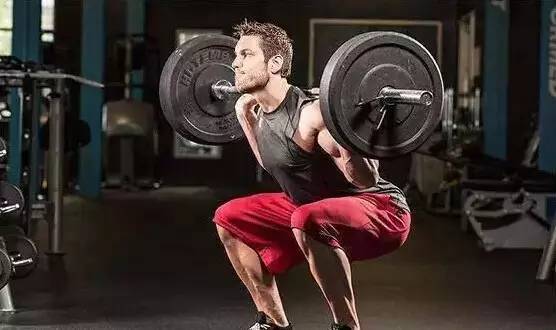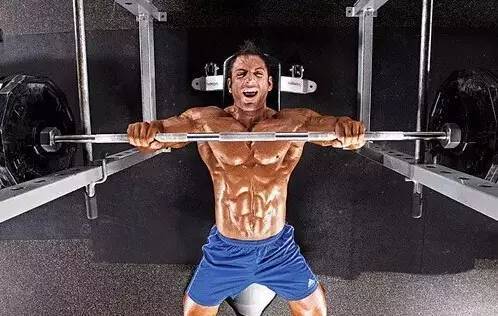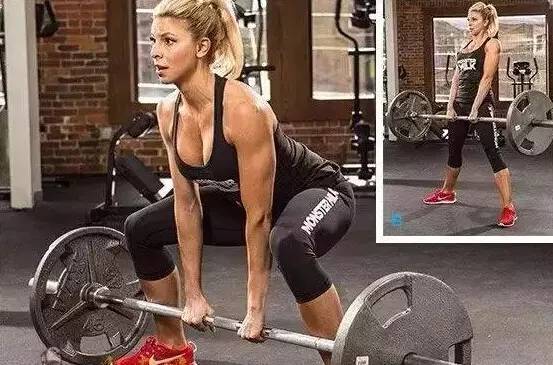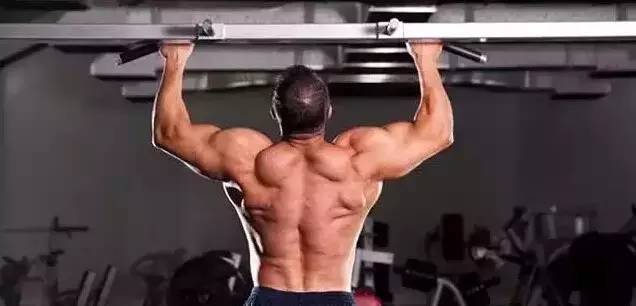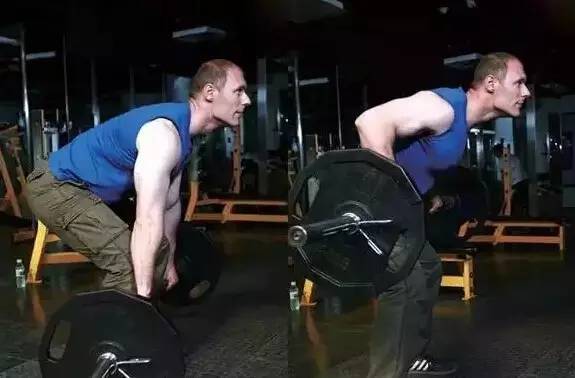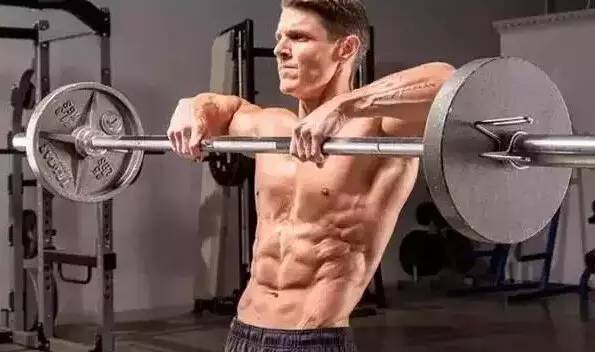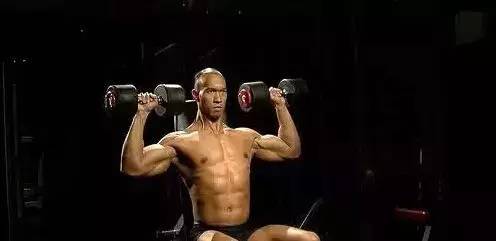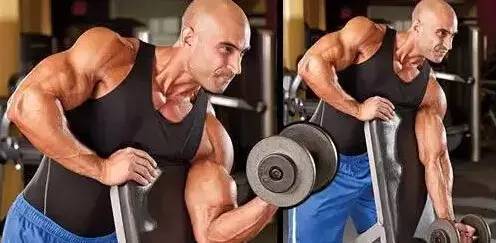This is an age that likes to be refurbished, as well as fitness exercises, and new ideas and new practices are emerging. However, as a fitness enthusiast, if you are obsessed with the endless stream of new exercise methods, and you are dismissive of the basic bodybuilding training action, it is a slap in the end. Don't let your barbells and dumbbells get dirty. Now, carefully review the following 10 training exercises, and consistently use them as the core of training, you will be on the road to success. 1, squat This is the primary choice for many athletes in strength training. As the squat warrior Frederick Field said, "This action should be suitable for everyone from housewives to weightlifters." Squats mainly exercise the muscles of the buttocks, quadriceps, hamstrings, erector spinae, and waist. It can increase the bone density of the spine and legs, increase the strength of the whole body, and improve the coordination of the body. The most basic squat movement is standing barbell squat, but it has a lot of changes, such as sumo wrestling, one-legged squat, barbell neck squat, lunge squat, free squat, weightlifting squat, dumbbell deepè¹², Smith squat, squat squat, hacker squat, jumping squat, fitness ball squat, etc. The correct approach: Use a barbell lock to prevent the barbell from slipping off; Place the barbell on the trapezius muscle, not on the neck or too low; The feet are shoulder-width or slightly wider than the shoulders, and the toes are 35 degrees outward; The knees and toes point in the same direction and ensure that the knees do not exceed the toes when squatting; Tighten your chest and look up; Tighten the abdomen; The waist maintains a natural physiological curvature, and in the case of high load, do not bend the spine and do not stretch too much; The knee is straight but not locked; Deep into the thighs and calves at an angle of 120-90 degrees. Inhale when you kneel, exhale when you stand up, don't breathe too deeply. 2, bench press "How much can you push?" is a question that two fitness enthusiasts often ask when they meet for the first time. This movement is particularly popular in the West, so many fitness clubs have 6-10 bench presses, even if they are full on Monday night, and there will be queues waiting. This action mainly exercises the forearm of the pectoralis major, triceps and deltoid muscles, which can improve the force of pushing, hitting and throwing, and improve the upper body posture. The most popular bench press action is the flat barbell bench press. Other bench presses include up and down slant barbell bench presses, upslopes, downslopes, flat dumbbell bench presses, and Smith bench presses. Similar actions include instrument push and push-ups. Narrow grip bench presses the triceps. The correct approach: Use a barbell lock to prevent the barbell from falling down; The position of the head: when the rod is not taken down, the eyes are vertically below the rod; Hold the barbell with both hands, slightly wider than the shoulder (when the elbow is 90 degrees, the chest, the two forearms and the barbell form a rectangle); Keep six points stable: two feet, hips, two shoulder blades, head; Keep the natural physiological curvature of the spine; do not lift the buttocks; When pushing, the elbow is always below the pole; The barbell should move up and down vertically above the chest; The barbell should be lowered to touch the chest; Exhale when you push up, inhale when you fall; Don't let the barbell bounce back from the chest muscles; Do not lock the elbow when pushing to the highest point; Do not lift your feet, head and buttocks. If the weight is too big, you should lose weight or find someone to protect. 3, the parallel bar arm flexion and extension You only need two parallel crossbars to do this. Classical parallel bars have two forms of flexion and extension: the elbows are more able to train the lower part of the pectoralis major; the elbows are closer to the body and the triceps are more involved. Correct action: . Hold the rod with both hands to keep the wrist straight and the arm is perpendicular to the rod above the rod; Slowly bend the elbow joint to approximately 90 degrees; Keep the shot outward, the chest tilting down slightly, and the knees bent; Do not lock the elbow joint at the top of the action; If you can do more than 15, you can use a strap to tie the barbell to your waist, or use your feet to hook the dumbbell to increase the weight. 4, deadlift Even if the English name of this action sounds terrible, it should also be part of a serious trainer. This action mainly exercises the erector spine, the lumbar muscles, the quadriceps, the gluteus maximus, the trapezius, and the forearm flexors; the straight leg deadlift and the Romanian deadlift mainly exercise the hamstrings. The correct approach: Use a positive and negative grip to prevent the barbell from slipping; The feet are shoulder-width or slightly wider than the shoulders. If a wide position is used, it is a sumo-type deadlift; Tighten your chest and look up; Maintain normal spinal curvature and do not collapse; Use the force of 30% of the abdominal muscles to tighten the abdomen in advance; Lifting the barbell close to the body when lifting up; The highest point of action, don't lean over and lean up; If you have insufficient grip, you can use the power belt. 5, pull-ups This training exercise mainly trains the latissimus dorsi, the lower part of the trapezius muscle, the biceps, the deltoid muscle and the forearm flexor, which can improve the upward pulling force and the stability of the upper part of the spine. The most popular method is to hold the pull-ups slightly wider than the shoulders. Other methods include neutral grip, back grip wide grip (pre-previous or prognosis), counter-grip narrow grip, and slapstick, etc. The difference is the participation of each muscle group. The high puller is very similar to the pull up, except that the pull-up weight is used instead of the pull-up torso. Correct action: Can be fully gripped or opened, but make sure that the grip is large enough and the hand does not slip; Tighten your chest and look up; Advance the abdomen with 30%-40% of the abdominal muscles in advance; Pull up the body to the same level with both hands and collarbone; Decrease the body in a controlled manner until the elbow extends to 170-175 degrees; Don't shake your body to borrow strength. If you can't complete 3-4 standard movements, use a pulley or lever device to pull back. If you can easily do 15 correct movements, you can use a strap to tie the barbell to your waist. Or use your feet to hook the dumbbells to increase the load. 6, pitching rowing This action can train almost all the muscles on the back, and the biceps, diaphragm, diaphragm, and forearm flexors are also highly trained. If there is no cushion on the chest, the lumbar muscles, erector spinae, gluteus maximus, and quadriceps need to maintain the same length to stabilize the body. There are many types of movements: leaning barbell rowing (reverse grip/positive grip), dumbbell leaning boating, dumbbell prone rowing, T-bar rowing, T-bar chest rowing, pulley rowing, equipment rowing, Smith stroke, barbell pole One weighting boating, etc. Correct action: The spine preserves natural physiological curvature; Pull the barbell to the lower abdomen or navel; When the weight is lowered, the elbows are straightened, but the back muscles are kept contracted (do not use the grip of the hand alone); Tall chest; Mainly moving the arm instead of the spine; Use 30-40% of the abdominal muscles to tighten the abdomen in advance. 7, upright rowing This action mainly involves training the deltoid muscles (anterior and middle bundles), trapezius muscles, biceps and forearm flexors to participate in training. In order to stabilize the upper body, the muscles of the abdomen and spine need to maintain an equal length of contraction. Common types of movements include: barbell upright rowing, dumbbell upright rowing, rope upright rowing, and Smith upright rowing. Correct action: You can choose a narrow grip (10-20 cm in both hands) or a shoulder-width grip; The knee is slightly bent, and the upper body is tilted forward by 5-10 degrees; The whole process of training keeps the barbell against your body and even touches your T-shirt; Pull the barbell up to the clavicle and raise the elbow as much as possible; Inhale when pulling up, exhale when the weight falls; Don't relax and drop your elbows to 170-175 degrees when the weight falls; Use the force of 30%-40% of the abdominal muscles to tighten the abdomen in advance. 8, shoulder press This action mainly trains the shoulders (anterior and middle bundles), upper chest, and trapezius. During standing training, the muscles of the buttocks, abdomen, and spine need to be contracted to keep the upper body stable. The basic action is to stand the barbell neck forward. Similar actions include a barbell neck back, a dumbbell shoulder, a Smith shoulder, a device shoulder, and Arnold's recommendation. The correct approach: Maintain the natural physiological curvature of the spine; The abdomen should not protrude forward; Can choose to fully hold or open the grip; The wrist remains straight and the weight is above the forearm; Make the weight slowly drop Keep the elbow joint under the pole; Push the weight onto the head instead of the front of the body; Do not lock the elbow joint at the top of the action; If you choose sitting posture training, adjust the angle of the backrest to about 100 degrees instead of 90 degrees. 9, curling This action involves the biceps, diaphragm, diaphragm, and forearm flexors. When standing, the hips, abdomen, waist, and spine muscles contract equally. In addition to the most classic standing barbell curls (straight or curved), there are standing posture dumbbell curls, standing posture barbell counter-grip bending (more exercise diaphragm), standing posture dumbbell hammer curl, station Barbell-style curling, dumbbell cross-bending, dumbbell cantilever curling, upward-bending curling, instrument curling, etc. Correct action: Advance the abdomen with 30%-40% of the abdominal muscles in advance; Tighten your chest and look up; The elbows are placed close to the sides of the body; The knees are slightly curved and the upper body is slightly forward; Smoothly, put down the weight in a controlled manner, and don't shake your body back and forth. 10, abdominal muscle training The main goal of abdominal training is to increase the stability of the waist during exercise, prevent waist pain and create a visual effect of 6 packs. Abdominal training has little to do with reducing stomach. Correct action: The belly movement should shorten the distance between the sternum and the pelvis, which shortens the contraction of the abdominal muscles; The waist does not leave the ground; The chest is lifted up; Keep the front straight and do not bend excessively. Fitness novices should learn the above 10 exercises well, they can basically exercise the muscles of the whole body, as long as the step-by-step exercise for a year and a half, you will be able to achieve your desired body. Micellar Cleansing Water,SkinActive Micellar Cleansing Water,Micellar Water,Organic micellar water,Micellar water for oily skin Ningbo Roni Cosmetic Co,.Ltd , https://www.ronicosmetics.com